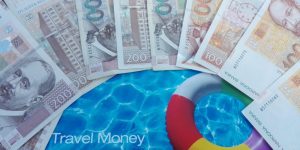TRAVEL BLOG 03/09/2018
As a British national, I’ve got used to the ease of travelling in Europe and the simple exchange rate conversion it brings with it. I’ve happily adopted the one currency that now fits a range of countries, as it makes crossing multiple borders so simple. Perhaps it is this ease of conversion that now so beguiles many of us when we travel further afield. Popular destinations like Iceland, Japan and Jamaica all have currencies with a few zeros. In other long-haul holiday locations, it’s even worse. Our hands often bulge with notes that make it seem like we are spending millions. Indonesia is a prime example of a 19,000 to £1 currency exchange rate, which leaves your head spinning every time you hand over cash.
When venturing out of Europe most of us can calculate simple currency exchange rates when they are in single figures. Like the 10 to £1 ratio of the Hong Kong Dollar or the slightly lower figures of the US, Australian or New Zealand Dollars. However, venture to Cambodia and you are looking at 5,260 Reil to every £1. Changing currency for a visit to Iran instantly makes you a millionaire with just less than £19 in your pocket. So how do you overcome the brain ache of re-calculating the cost of your goods in an instant?
Converting rates the old way
The best way of manually converting the exchange rate with your grey cells is to round the rate up to a number you will remember. The Indian Rupee, for example, currently, at 92 to £1, could be rounded off to an easy 100 to £1.
Another method is to work out a cost comparison to something you would normally buy at home. Like a meal out or a pint of beer. Tourist traps are often expensive so up your average cost a bit. Maybe £5 a pint instead of £4.50. Then when you are away in Colombian you know an average pint should be under 20,000 Peso. Or if you are in South Korea a glass of the amber nectar would be 7,200 Won. A meal for two should average 5,000 Rupee in Sri Lanka. This isn’t an entirely accurate method of calculating the true cost, as the standard of living is much cheaper. An average meal in Sri Lanka should only cost 1-3,000 Rupee. But at least you know you aren’t being ripped off.
Technological accuracy
Thanks to the marvel of technology you no longer have to use inaccurate estimates to calculate the actual cost of your dinner. There are a multitude of Apps to download. It’s as simple as that. You can choose to download so they can be used offline if you are somewhere remote like Africa. Specific rates can be selected in advance or you can use a currency converter which downloads the current exchange rates for every country at the time of installation. Most are free to download and available on both Apple and Android platforms.
CalConvert is one of the most useful calculator and unit converter Apps available. Used by millions of travellers worldwide, it has large and clear buttons, making it suitable for all. Supported in over twenty-four languages it also boasts both Mathematical and Scientific functions just in case you may need them.
If you are lucky enough to have an almost unlimited connection to the web, then the world is your oyster. You can surf to your heart’s content and get the most up to date exchange rates, so you know exactly how your holiday budget is being spent and what is left in the wallet.

Comments are closed.